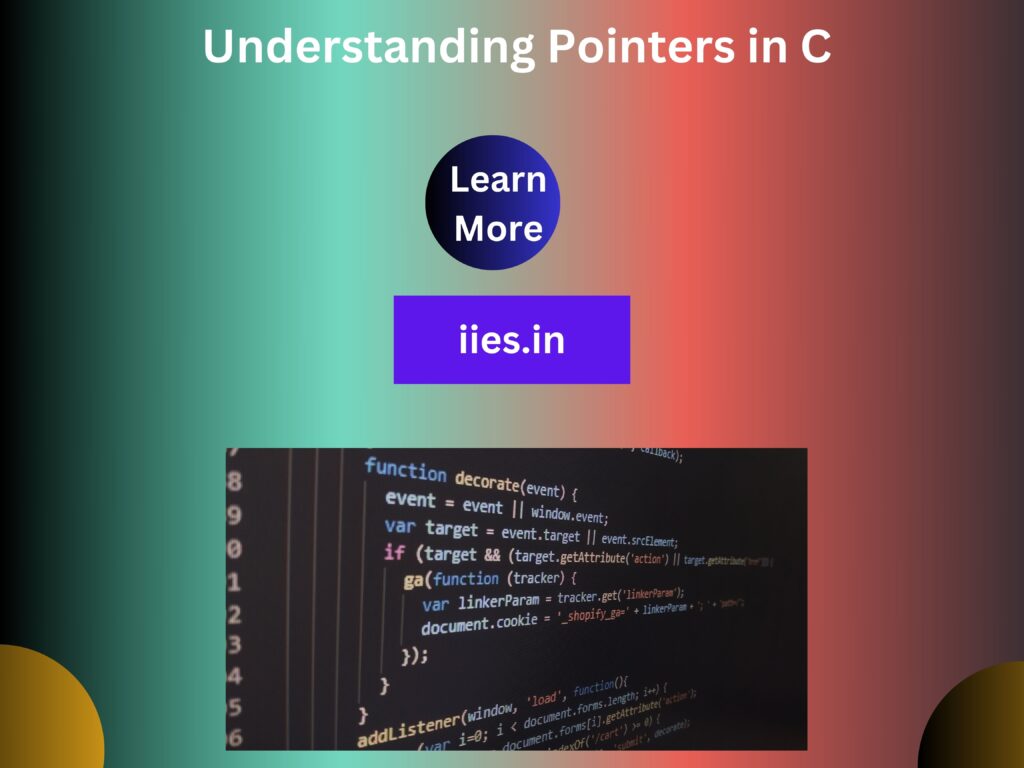
In the C programming language, pointers stand out as one of the most powerful and essential features. They provide a way to directly access and manipulate memory, making programs more efficient and flexible. While pointers may seem complex to beginners, understanding them unlocks a deeper level of control over how data is stored and accessed.
Whether you’re working with arrays, dynamic memory, functions, or data structures like linked lists and trees, pointers play a critical role. This guide aims to break down the fundamentals of pointers—what they are, how they work, and how to use them effectively in real-world C programs. From basic syntax and memory addresses to advanced concepts like function pointers and pointer arithmetic, this comprehensive overview will help you master pointers step by step.
A pointer is a variable that stores the memory address of another variable. Instead of holding a value directly, it “points to” the location where a value is stored in memory.
In simple words:
A normal variable handles stored information as integers or characters but pointers hold storage locations of data.
Path variables hold addresses which represent the specific area where information is located.
Syntax:
*pointer_name;
Here, * indicates that the variable is a pointer, and specifies the type of data the pointer will point to.
Example:
int n = 10;
The variable ptr receives n’s memory address through the operator &.
Declaration and Initialization
int n = 5;
int *ptr = &n;
Dereferencing a Pointer
The dereference operator * allows users to access the stored value located at the memory address.
printf(“n: %d”, *ptr); // Prints the value of n.
Null Pointers
A null pointer is initialized to NULL, indicating it points to nothing.
int *ptr = NULL;
Pointer Arithmetic
Increment or decrement a pointer to traverse an array.
int Array[] = {1, 2, 3};
int *ptr = Array;
ptr++; // Now points to Array[1]
Pointers and Arrays:
Arrays share a direct relationship with pointers according to programming terminology. An array name functions as a constant reference which points to its initial entry.
int Array[] = {10, 20, 30};
int *ptr = Array;
printf(“First element: %d “, *ptr); // 10
Pointer to Pointer:
Pointers can refer to additional pointers so you can achieve multiple stages of indirect addressing.
int n = 10;
int *ptr1 = &n;
int **ptr2 = &ptr;
printf(“Value of x: %d”, **ptr2); // 10
Pointers and Functions:
Use pointers as function arguments to obtain maximum data handling effectiveness.
void increment(int *num) {
(*num)++;
}
int main(){
int n = 5;
increment(&n);
printf(“Value of n: %d”, n); // 6
retuDynamic Memory Allocation
Allocate and manage memory at runtime using malloc, calloc, realloc, and free.
int *ptr = (int *)malloc(sizeof(int));
*ptr = 42;
free(ptr);
Advanced Concepts of Pointers:
Function Pointers:
Pointers can store function addresses before triggering the function call using the pointer values.
void great() {
printf(“India is great!\n”);
}
int main() {
void (*func_ptr)() = great;
func_ptr(); // Calls great
Pointer to a Struct:
Access structure members using a pointer.
struct Point{
int a, b;
};
struct Point p = {10, 20};
struct Point *ptr = &p;
printf(“a: %d, b: %d”, ptr->a, ptr->b);
Void Pointers:
A void pointer can point to any data type. Typecasting is required to dereference it.
void *ptr;
int a = 10;
ptr = &a;
printf(“Value: %d”, *(int *)ptr);
Pointer to a Function Returning a Pointer:
Complex scenarios involve pointers to functions returning pointers.
int *return_pointer(int *x){
(*x)++;
return x;
}
int main(){
int num = 5;
int *ptr = return_pointer(&num);
printf(“Value: %d”, *ptr); // 6
return 0;
}
Indian Institute of Embedded Systems – IIES